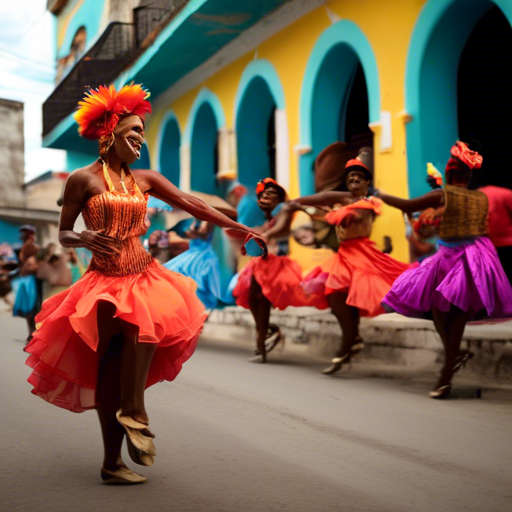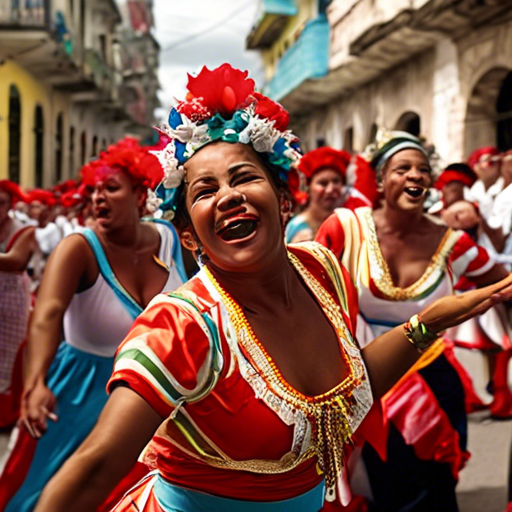 understanding cuban customs: a guide to local etiquette
understanding cuban customs: a guide to local etiquette
 understanding cuban customs: a guide to local etiquette
understanding cuban customs: a guide to local etiquette
 the vibrant world of cuban music and dance traditions
the vibrant world of cuban music and dance traditions
 exploring cuban cuisine: culinary etiquette and must-try dishes
exploring cuban cuisine: culinary etiquette and must-try dishes
 cuban festivals and celebrations: a cultural immersion
cuban festivals and celebrations: a cultural immersion
 navigating social norms in cuba: tips for respectful interactions
navigating social norms in cuba: tips for respectful interactions
Cultural Insights and Etiquette
Understanding the cultural nuances and etiquette of a country is essential for fostering respectful and meaningful interactions. This is particularly true for Cuba, a nation rich in history, tradition, and social customs. In this article, we delve into the cultural insights and etiquette that will help you navigate Cuban society with ease and respect.
Historical Context
Cuba's cultural landscape is deeply influenced by its history. From its indigenous roots to Spanish colonization, and the African slave trade, to the revolutionary period, each era has left an indelible mark on Cuban society. This historical context is crucial for understanding contemporary Cuban culture.
Colonial Influence
The Spanish colonization of Cuba began in the early 16th century and lasted until 1898. During this period, Spanish customs, language, and religion were deeply ingrained in Cuban society. The Catholic Church, in particular, played a significant role in shaping social norms and values.
African Heritage
The African slave trade brought a significant African influence to Cuba, particularly in music, dance, and religion. Santería, a syncretic religion combining Catholicism and African spiritual practices, is a testament to this cultural fusion.
Revolutionary Impact
The Cuban Revolution of 1959, led by Fidel Castro, brought about profound social and economic changes. The revolution emphasized equality, education, and healthcare, which continue to be cornerstones of Cuban society today.
Social Etiquette
Social etiquette in Cuba is a blend of formal and informal practices. Understanding these nuances can help you navigate social interactions more effectively.
Greetings
Greetings in Cuba are warm and often involve physical contact. A common greeting is a handshake accompanied by a smile. Among friends and family, a kiss on the cheek is customary.
- Handshakes: Used in formal settings and initial meetings.
- Kisses on the cheek: Common among friends and family.
- Verbal greetings: "Hola" (Hello) and "¿Cómo estás?" (How are you?) are frequently used.
Gift Giving
Gift giving is a common practice in Cuba, especially during social visits. Small, thoughtful gifts are appreciated and seen as a gesture of goodwill.
- Flowers: A popular choice for hosts.
- Local products: Items like rum or cigars are well-received.
- Avoid expensive gifts: They may make the recipient uncomfortable.
Dining Etiquette
Dining in Cuba is a social affair, often involving extended family and friends. Understanding the dining etiquette can enhance your experience.
- Table manners: Wait for the host to invite you to sit and start eating.
- Conversation: Engage in light, pleasant conversation during meals.
- Compliments: Compliment the host on the food; it is considered polite.
Communication Styles
Communication in Cuba is characterized by warmth, expressiveness, and a high-context style. Understanding these elements can help you communicate more effectively.
Verbal Communication
Cubans are known for their expressive and animated verbal communication. They often use gestures and facial expressions to convey their message.
- Directness: Cubans appreciate honesty and directness in conversation.
- Storytelling: Storytelling is a common way to share experiences and information.
- Humor: Humor is an integral part of Cuban communication.
Non-Verbal Communication
Non-verbal cues play a significant role in Cuban communication. Being aware of these can help you interpret messages more accurately.
- Gestures: Hand gestures are commonly used to emphasize points.
- Eye contact: Maintaining eye contact is a sign of respect and attentiveness.
- Personal space: Cubans tend to stand close to each other during conversations.
Festivals and Celebrations
Festivals and celebrations are an integral part of Cuban culture. Participating in these events can provide deeper insights into the country's traditions and values.
Carnival
Carnival is one of the most vibrant and anticipated events in Cuba. Held in July, it features parades, music, dancing, and elaborate costumes.
- Parades: Colorful parades with floats and dancers are a highlight.
- Music: Live music, particularly salsa and rumba, is central to the celebrations.
- Community involvement: Carnival is a community event, with participation from all age groups.
Havana International Jazz Festival
The Havana International Jazz Festival, held in January, attracts jazz enthusiasts from around the world. It showcases both local and international talent.
- Performances: Concerts are held in various venues across Havana.
- Workshops: Music workshops and masterclasses are part of the festival.
- Jam sessions: Informal jam sessions provide opportunities for spontaneous performances.
Religious Celebrations
Religious celebrations, particularly those related to Santería, are an important aspect of Cuban culture. These events often involve music, dance, and rituals.
- Feast days: Feast days for saints are celebrated with processions and offerings.
- Rituals: Santería rituals include drumming, dancing, and chanting.
- Community gatherings: These events are community-oriented and open to all.
Business Etiquette
Understanding business etiquette in Cuba is crucial for establishing successful professional relationships. The business culture is a blend of formality and personal connection.
Meeting Protocol
Meetings in Cuba often start with small talk to build rapport. Punctuality is appreciated, but there is some flexibility.
- Introductions: Use formal titles and surnames during introductions.
- Small talk: Engage in light conversation before discussing business.
- Agendas: Meetings may not always follow a strict agenda.
Negotiation Style
Negotiations in Cuba are characterized by a collaborative approach. Building trust and relationships is key to successful negotiations.
- Patience: Negotiations may take time; patience is essential.
- Trust: Establishing trust is crucial for successful outcomes.
- Flexibility: Be prepared to adapt and find mutually beneficial solutions.
Dress Code
The dress code for business settings in Cuba is generally formal. However, the tropical climate influences the choice of attire.
- Men: Light suits or guayabera shirts are common.
- Women: Dresses or skirts and blouses are appropriate.
- Climate considerations: Choose lightweight fabrics suitable for the tropical climate.
Conclusion
Understanding the cultural insights and etiquette of Cuba is essential for anyone looking to engage with this vibrant nation. From historical influences to social customs, communication styles, and business practices, each aspect offers a window into the Cuban way of life. By respecting and embracing these cultural nuances, we can foster deeper connections and enrich our experiences in Cuba.
